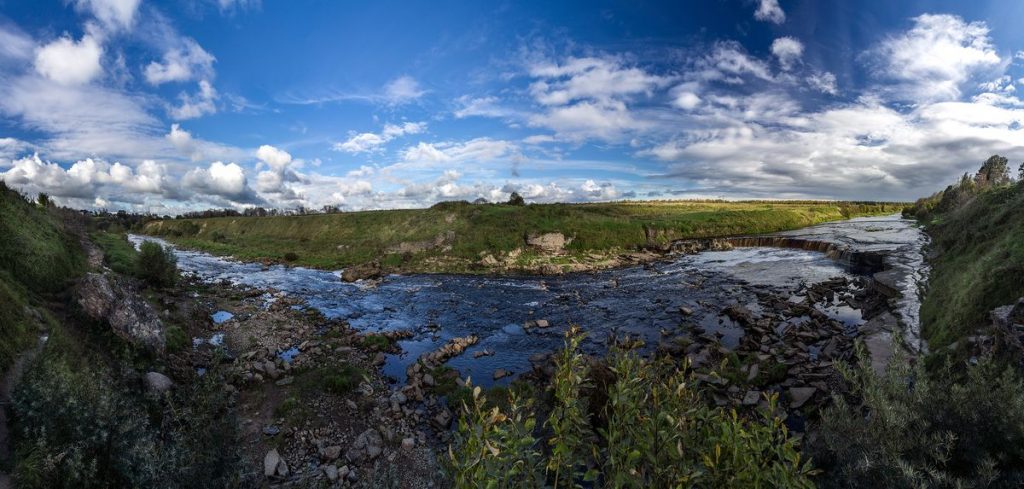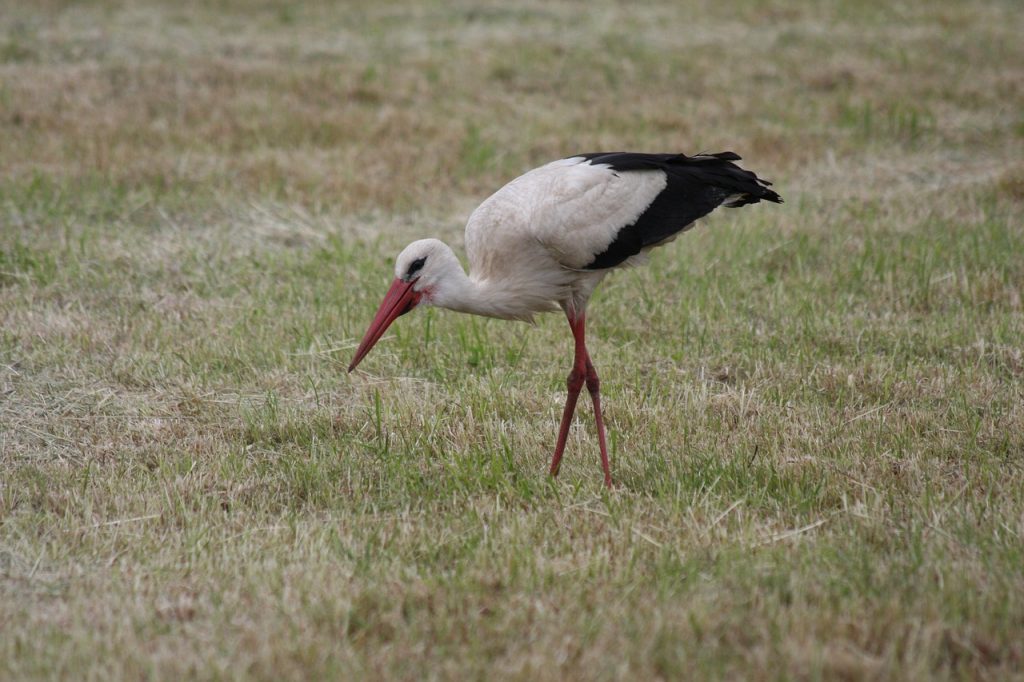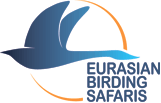One of the most interesting individual and group tours is to the North-Western part of Russia not far from the Finnish border. This tour offers a several day stay in St. Petersburg, the largest city in the world located above the 60th parallel. It includes excursions to the Hermitage, St. Petersburg zoological museum, which is one of the largest in Europe, and finally a field trip to the Olonetsky and Nizhneswirsky Preserves – Karelian Bird Eldorado, located 300 kilometers (200 miles) North-East of St. Petersburg near the town of Olonets.
This is a place in Russia that allows it’s visitors a chance to see many diverse birds in such great numbers it is more than many people have ever seen in their entire life. It is situated on the south-eastern shore of Lake Ladoga – the largest European freshwater lake, located within the middle subzone of the dark coniferous boreal forest zone. The area around the town of Olonets, with it’s extensive farmlands, chiefly under perennial and annual grasses, is generally atypical of the local climate. If it were not for the draining ditches and shrubs growing on their sides, one would surely get a feeling that they have been suddenly transported to the steppe surrounded by woods over beyond the horizon. This may actually be the way the area is perceived by birds living there, among which there are some representing the steppes.

In summer, these fields are ordinary fields with a typical assemblage of bird species. However, in spring there are enormous numbers of birds that pass through this area on their way to the north-east along the Baltic-White Sea flyway from their wintering grounds in Western Europe and Africa. Some, like the Brent Goose (Branta bernicla), Red-necked Phalarope, Black-bellied Plover (Phalaropus lobatus, Pluvialis squatarola) and the others usually cross the distance between the Baltic and the White Sea in one non-stop flight. Most other migrating birds stop to rest and forage in the Olonets’ fields.
In spring geese, swans, diving and puddle ducks, wood pigeons, many wader and passerine species, as well as numerous other migrants make stops here. Where there are concentrations of potential prey there naturally appear large numbers of raptors.
Particularly large concentrations in the 0lonets area are formed by geese, who find perfect feeding conditions in the vast fields, and beautiful and safe overnight shelter on Lake Ladoga or on large marshes. This very combination facilitates the formation of large geese concentrations, the greatest ones in Northern Europe. How many times have you seen 5 thousand geese of various species feeding simultaneously in one place? Such flocks are quite common in the Olonets fields in spring, and before departing for the night the birds sometimes gather in even larger flocks numbering some 10,000 individuals. White-fronted Geese (Ancer albifrons) make up the bulk of the flocks. There are Bean Geese in the flocks. If you look closer, you can see not only Tundra Bean Goose (Anser fabalis rossicus) but also the Taiga Bean Goose (A. fabalis fabalis).

The search for various rarities in an aggregate multi-species flock is an extremely exciting activity, especially when there are several watchers. They are inevitably involved in competition in spotting birds with unusual coloration, melano, albino, hybrid individuals, banded birds. It is not so easy to locate such birds among the many thousands. One should be really attentive, however, not to miss the Greylag Goose, Pink-footed Goose, Lesser White- fronted Goose, (Ancer ancer, A. brachyrhynchus, A. erythropus) which are rare in the Olonets fields. If you are very lucky, you may see also some rare visitors to the area – Branta Geese: Canada Goose, Red-breasted Goose and Brent Goose (Branta canadensis, B. ruficollis and B. bernicla). The Brent goose may be represented by two subspecies: Branta b. bernicla and B.. bernicla Hrota. Stopping in fields is generally very atypical of the Brent Goose. As has been mentioned above, they are birds of passage throughout Karelia up to the White Sea. They are one of the last birds to migrate, departing mostly in the last ten days of May – early June. They normally fly at a considerable altitude, often at night.
In addition to geese, you will certainly feel curious about puddle ducks. Their abundance in the area actually shows 4 – 5-fold annual fluctuations depending on the availability of ice-free water in shallow areas along Lake Ladoga shore and the number of seasonal bodies of melt water in the fields. In years when the duck migration peaks coincide with the abundance of spring water in the fields and ice-covered shallows the birds concentrate in farmlands, and vice versa. The period of the maximum intensity of puddle duck migration through the area is quite short – normally up to 5 days. This period falls on the last ten days of April – first five days of May, depending on how the spring proceeds. After the migration peak is over, only local ducks stay to breed and raise their young. These are mainly the Mallard, Green-winged Teal, Garganey, Northern Pintail and Northern Shoveler (Anas plathyrhyncha, A. crecca, A. querquedula, A. acuta, and A. clypeata)
Diving duck species are abundant in shallow areas along Lake Ladoga shore. The eastern shore features large stopping places of the Tufted Duck, Greater Scaup, Common Scoter and White-winged Scoter (Aythya fuligula, A. marila, Malanitta nirga and M. fusca) When the migration reaches it’s peak of over 10,000 birds of various species pass the flow-way each hour. Diving duck stopping concentrations and migrating bird flows on Lake Ladoga most often form in the second half of May. In some years this happens in the end of the first ten days of May, together with mass arrival of passing Tufted Duck flocks. In shallow areas with reed clusters one can see, in addition to diving ducks, aggregated puddle ducks, swans, gulls, terns and waders.

Whooper and Bewick swans (Cygnus cygnus, C. columbianus) occur predominantly in transient flocks. They seldom stop in the fields, this is done more often by the Bewick Swan. Both species stop more often in shallow coastal areas of Lake Ladoga. These stopping places are not so abundant, but the swans use them year after year.
Among Ciconiiformes the Great Bittern (Botaurus stellaris) regularly nests in the coastal reed strips on Lake Ladoga. One case of breeding success is known also for the White Stork (Ciconia ciconia), which has lately been turning into a regular spring visitor to the Olonets fields. The Gray Heron (Ardea cinerea) is quite common on Lake Ladoga and other lakes of the area. after mid-summer. In spring, the bird is very rare.

Diurnal raptors are well represented group in the area. During migration, Rough-legged Buzzard, Common Buzzard (Buteo lagopus, B. buteo) and harriers are quite abundant in the Olonets fields. Other common species are the Kestrel, Merlin, Sparrow hawk (Falco tinnunculus, Falco columbarius, Accipiter nisus), and on Lake Ladoga shore – also the Hobby (Falco subbuteo). White-tailed Sea Eagle, Golden Eagle, Spotted Eagle, Lesser Spotted Eagles and Short-toed Eagle (Haliaeetus albicilla, Aquila chrysaetos, A. clanga, A. pomarina) are also encountered quite frequently. Lake Ladoga also hosts the Osprey (Pandion haliaetus). A lucky observer may see some more rare birds such as the Peregrine Falcon, Red-footed Falcon and Black Kite (Falco peregrinus, F. vespertinus and Milvus migrans). The fields and the Ladoga shore are sometimes visited by the rare Milvus korshun. The quite common Honey Buzzard and Goshawk (Pernis apivorus and Accipiter gentilis) are more often encountered in forested areas than in fields.
Still, the most typical representatives of raptors in the fields are obviously harriers. One would see the Montagu’s Harrier (Circus pygargus). Hen and Marsh Harriers (Circus cyaneus and C. aeruginosus) are slightly more seldom. Not so often, yet quite regularly one would see the Pallid Harrier (Circus macrourus).
The Galliform encountered in the spring are the Black Grouse [Tetrao (Lyrus) tetrix], diplaying spectacular fights while congregating on the leks during the breeding season in April – May, the White-billed Capercaillie (Tetrao urogallus), which could be heard singing at night from late March until the early May and the Hazel Grouse [Bonasa (Tetrastes) bonasia]. In the nearby wet pine forests one may encounter the Willow Ptarmigan (Lagopus lagopus). Those coming to the fields in June-July may hear the Quail (Coturnix coturnix), which sometimes breeds in the area.
A very common bird in the Olonets district is the Common Crane (Grus grus). The species is represented both by birds of passage showing up as early as in mid April and by resident individuals foraging in the field while marshes are still covered in snow, and by immature birds staying in the fields throughout the spring, summer and autumn, and gathering into flocks of 50-60 individuals.

Speaking about rails one first of all note the abundance of the Corncrake and Spotted Crake (Crex crex and Porzana porzana). A very rare species in the area is the Little Crake (Porzana parva). Reeds in some streams feeding into the Lake Ladoga are used as nesting grounds by the Coot (Fulica atra).
The background bird species for the fields are Charadriiformes, the Eurasian Curlew, Whimbrel, Black-tailed Godwit and Common Snipe (Numenius arquata, N. phaeopus, Limosa limosa and Gallinago gallinago). The obvious dominant among waders in the Olonets fields during the migration season is the Golden Plover (Pluvialis apricaria) with the foraging flocks numbering up to a thousand. In the period of migrations the quite common for the area sedentary Lapwing (Vanellus vanellus), Curlew, Whimbrel, Godwits are joined by a great number of migrating representatives of the species. Each spring the fields are used as a stopping place by various g. Tringa species, including the rare Spotted Redshank and Marsh Sandpiper (Tringa erythropus and T. stagnatilis). One may also encounter the Bar-tailed Godwit, Terek Sandpiper, Eurasian Oystercatcher, Broad-billed Sandpiper, Red-necked Phalarope and Black-bellied Plover (Limosa lapponica, Xenus cinereus, Haematopus ostralegus, Limicola falcineus, Phalaropus lobatus and Pluvialis squatarola).
In the second half of May and later, in summer, flocks of the Ruff (Philomachus pugnax) arrive in the fields in the Olonets area. The Great Snipe (Gallinago media) has also become a rare species in the Olonets fields. At night, there is a chance of hearing the Jack Snipe (Lymnocryptes minimus).
On the Lake Ladoga shore various Calidrine (Calidris spp.) and the Common Sandpipers (Gallinago gallinago) could be found. There is a much greater probability of seeing the Eurasian Oystercatcher, Turnstone (Arenaria interpres), Black-bellied Plover than there is in the fields.
Just before the sunset it is possible to see the Eurasian Woodcock (Scolopax rusticola) a species quite common in the region.
The gulls that have become constant residents in the fields are Common Gulls (Larus canus). A surprising fact is that here they nest in separate pairs rather than in colonies. Black-headed Gulls (Larus ridibundus), which settle in very wet parts of abandoned fields, stick, however, to the colony mode of nesting. The species composition of gulls foraging in the fields is richer. In addition to the named species, there are also the Herring Gull, Lesser Black-headed Gull, Little Gull (Larus argentatus, L. fuscus, L. minutus) and sometimes even the Great Black-backed Gull (Larus marinus), which has colonized Lake Ladoga in the last decades, as well as the Black-legged Kittiwake (Rissa tridactiyla), Skuas and Glaucous Gull (Larus hyperboreus).
Terns can be seen over the fields during the migration season and foraging movements. On the lake Ladoga one can see the Common, Arctic and Caspian Terns (Sterna hirundo, S. paradisaea and S. caspia), as well as the locally more rare Black and Little Terns (Chlidonias niger and Sterna albifrons).

The wood pigeons also form large staging and pre-departure concentrations in the Olonets fields. Their flocks sometimes comprise the Stock Dove (Columba oenas). The European Turtle-Dove (Stretopelia turtur), is a species occurring here regularly. Walking through the Olonets city park one may see the nesting Eurasian Collared Dove. Semi-domesticated Rock Dove (Columba livia) is quite common.
Out of owl species Short-eared Owl (Asio flammeus) is relatively abundant and nests throughout the fields. The Common Long-eared Owl (Asio otus) is also quite common in the area. The rest of the region’s owl species, Eagle Owl, Ural Owl, Tawny Owl, Great Gray Owl, Northern Hawk Owl, Tengmalm’s Owl, and Eurasian Pygmy Owl (Bobo bubo, Strix uralensis, Strix aluco, S. nebulosa, Surnia ulula, Aegolius funereus and Clausidiu passerinum) mostly live in the forest. Although they occasionally leave the forest to hunt in the fields, this is done chiefly during the dark time of the day, the spring white nights making the pattern not so strictly followed, however.
The only local representative of its order, the Nightjar (Caprimulgus europaeus) is quite common in the district – not in the farmland, but in forested areas, particularly in open young stands and clear-cuts.
In addition to the Common Cuckoo (Cuculus canorus), a species common in our region, the area is sometimes visited also by the Oriental Cuckoo (Cuculus saturatus), a representative of the Siberian fauna.
There is a rich variety of migrating passerines including buntings, particularly numerous between mid March and mid April, and other northerners such as the Shore (Horned) Lark, Lapland Bunting, Red-throated Pipit (Eremophila alpestris, Calcarius lapponicus, Anthus cervinus), etc. Whichever ways through fields with shrubs one chooses in spring they are certain to encounter the Great Grey Shrike (Lanius excubitor). The species composition of nesting field birds is quite common for the region. These are the Skylark, Meadow Pipit, Whinchat, Yellow Wagtail, Grasshopper Warbler and River Warbler (Alauda arvensis, Anthus pratensis, Saxicola ruberta, Motacilla flava, Locustella naevia and Locustella flaviatilis). Early in spring and in autumn the fields harbour considerable concentrations of thrushes and blackbirds, finches, buntings. Here are breeding grounds of the Reed Bunting, Bluethroat, Sedge Warbler, Blyth’s Reed Warbler, Marsh Warbler (Emberiza schoeniclus, Luscinia svcica, Acrosephalus schoenobaenus, A. dumetorum, A. palustris) and other warblers. The area has lately started being colonized also by the Booted Warbler (Hippolais caligata).
The bird fauna of the Olonets fields remains quite peculiar both in the post-breeding period and during autumn migrations. Aggregations with many thousands birds of various species are formed by the Common Chaffinch, Brambling, (Fringilla coebels, F. montifringilla) buntings, thrushes and blackbirds, Starling, Dunnock, (Sturnus vulgaris, Prunella modularis) etc. Wood pigeons gather here in large pre-departure concentrations. The abundance of the Common Crane, Turtle Dove, Black Grouse, passing buzzards, harriers and falcons increases markedly. There are about 200 species of birds that can be seen in this area in the spring, including: Podiceps griseigena, P. auritus, Bucephala clangula, Aythya ferina, A. fuligula, A. marila, Somateria mollissima, Clangula hyemalis, Malanitta nirga, M. fusca, Mergus merganser, M. serrator, M. albellus, Vanelleus vanellus, Haematopus ostralegus, Arenaria hypoleus, Actitis hypoleucos, Tringa ochropus, T. glareola, T. nebelaria, T. totanus, Trin?a erythropus, Philomachus pugnax, Cepphus grylle, Alca torda, Uria lomvia, Uria aalge, Fratercula arctica, Plotus alle and others.
The highlights of the trip will include stalking capercallies at night, the only time during the mating season when the bird can be approached and observed at a close range, sitting in blinds to watch fighting black cocks and watching up to 7 varieties of geese form the observation towers.

